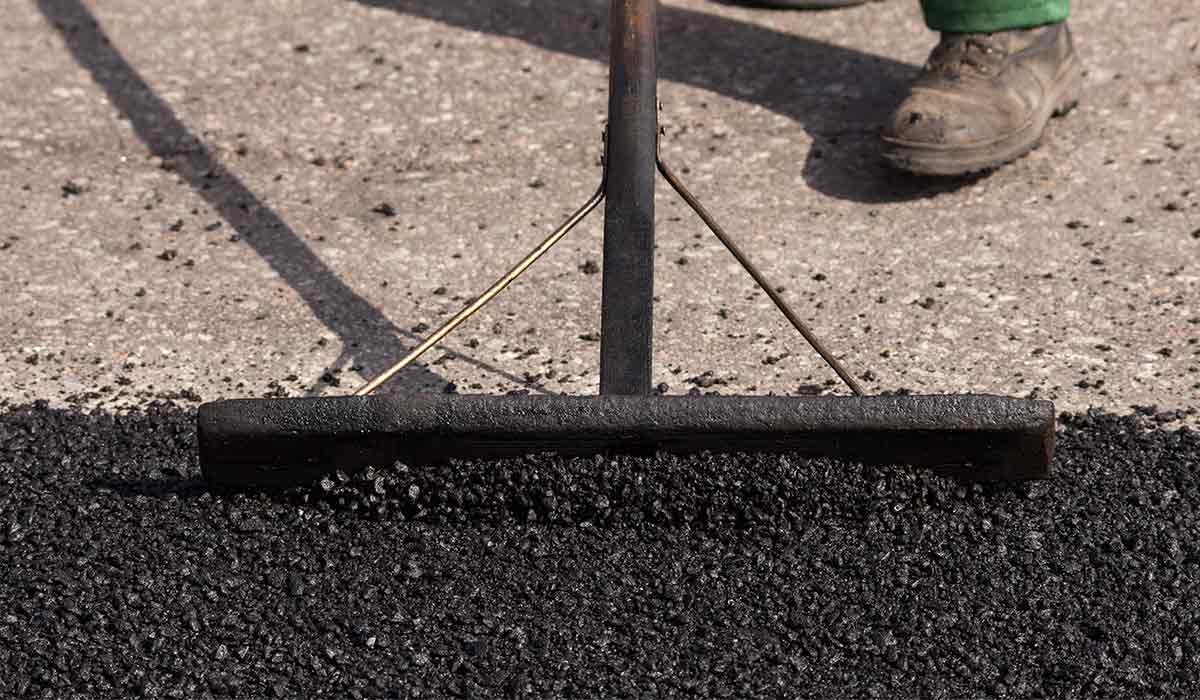4 Easy Facts About A1 Professional Asphalt & Sealing Llc Explained
4 Easy Facts About A1 Professional Asphalt & Sealing Llc Explained
Blog Article
Some Known Details About A1 Professional Asphalt & Sealing Llc
Table of ContentsThe Only Guide for A1 Professional Asphalt & Sealing LlcThe Greatest Guide To A1 Professional Asphalt & Sealing LlcNot known Facts About A1 Professional Asphalt & Sealing Llc10 Simple Techniques For A1 Professional Asphalt & Sealing LlcThe A1 Professional Asphalt & Sealing Llc PDFs

The oil in an auto engine is not just oil. It includes a variety of ingredients to boost the automobile's efficiency. These consist of polymers, thickness modifiers, warmth stabilizers, extra lubricants, and use additives. The REOB contains all the additives that were in the waste oil as well as the wear metals from the engine (mostly iron and copper).
By making several blends using various REOB examples and various asphalt binders, the variations largely can be averaged out. A number of States gave samples of known REOB composition to TFHRC researchers, who examined the samples to compare the portion of included (known) REOB to the found (examined) quantity. The analyses revealed an equivalent percentage of added and found REOB.
The Best Strategy To Use For A1 Professional Asphalt & Sealing Llc
None of those States recognized that the asphalt they were buying had REOB. One State urged its examples had no REOB - https://businesslistingplus.com/profile/a1asphaltseal/.
Of the 1,532 samples tested, 12 percent contained REOB, and some had appreciably high levels of it at 1020 percent. The highest degree was 34 percent in a sample from Texas, which TxDOT had made use of in a patching substance. This testing additionally revealed the presence of phosphoric acid in 11 percent of the examples, and 2 percent had ground tire rubber.
2 years ago at TRB's yearly conference, the Federal researchers held an REOB workshop and offered the findings of their laboratory examinations to a standing room-only crowd. Some firms do not particularly ban REOB, they do enforce physical tests that avert its useeffectively a ban. Others do not outlaw it by spec, but have agreements with asphalt distributors to prevent making use of REOB
What Does A1 Professional Asphalt & Sealing Llc Do?
A handful do allow REOB, some within specific restrictions. Ohio and Texas limit levels to much less than 5 percent of the asphalt. To create a reputable examination method that all States can use, the TFHRC researchers established up a round-robin examination strategy. The individuals are 11 State highway firms (Illinois, Massachusetts, Minnesota, Mississippi, Montana, North Carolina, Oklahoma, South Carolina, Texas, Vermont, and Wyoming), 2 independent screening laboratories, the Ministry of Transport in Ontario, Queen's University in Ontario, and an Ontario paving professional.
In total, the researchers prepared and shipped 720 blends. The participants are evaluating the samples independently utilizing the guidelines supplied by the TFHRC researchers. The round-robin screening is virtually completed, and TFHRC is in the process of collecting the outcomes. The outcome will be a suggested AASHTO examination technique that any State can adopt and utilize (asphalt paving repairs).
The pavement with REOB, which lies 0.6 mile (1 kilometer) from the sidewalk without REOB, has the same subgrade, traffic density, and environment. The sector of Highway655 with 5 to 10 percent REOB showed significant fracturing. In this example, the visibility of REOB was the determined cause of fracturing at a low temperatures.
"In our experience in Canada, even little quantities of 23 percent can be a problem." In a similar way, a section of examination sidewalk in Minnesota (MN1-4) found to contain REOB also cracked too soon. The sidewalk carried out well for the very first 3 to 4 years, but after that began to break. This pavement is additionally based on low temperature click for more info levels.
Unknown Facts About A1 Professional Asphalt & Sealing Llc
The examinations were not considerable, yet they revealed that at degrees of 6 percent or more, the tensile stamina of the asphalt went down dramatically. At a degree of 3.5 percent REOB, the variant in the physical test methods was higher than the result of REOB. It was difficult for researchers to assess whether REOB was existing. https://pxhere.com/en/photographer/4237412.

One binder parameter considered is the difference between the reduced temperature level crucial spec temperature level for tightness (S) in the flexing beam of light rheometer and the bending light beam rheometer creep incline (m-value) kept in mind as Tcritical. TC = TC (S) TC (m-value). Examination of this parameter is still ongoing. 2 independent research groups, one from AASHTO and the other from the Asphalt Institute, concluded that more research is required on using REOB in asphalt.
Formerly, all asphalt screening determined design properties such as rigidity. These tests do not reveal what products had been contributed to the asphalt. One sample obtained throughout the TFHRC study had a very weird analysis. The example had the adhering to examination results: Superpave PG 64-28 with a high temperature level grade of 67.3 Tcritical on the bending beam of light rheometer was 6.7 levels Celsius.

The Definitive Guide to A1 Professional Asphalt & Sealing Llc
These results demonstrate there are weak points in the standardized design screening protocols that may be manipulated. The producer might have a financial benefit and the item passes all the standard examinations, yet the item might not be valuable to guaranteeing long-term efficiency. To address this concern and the growth of new asphalt additives and extenders, TFHRC is starting a study program to utilize portable spectroscopic tools, x-ray fluorescence spectroscopy, and Fourier transform infrared spectroscopy to make it possible for analyses to be carried out in the field as opposed to needing to take examples back to the lab.
Report this page